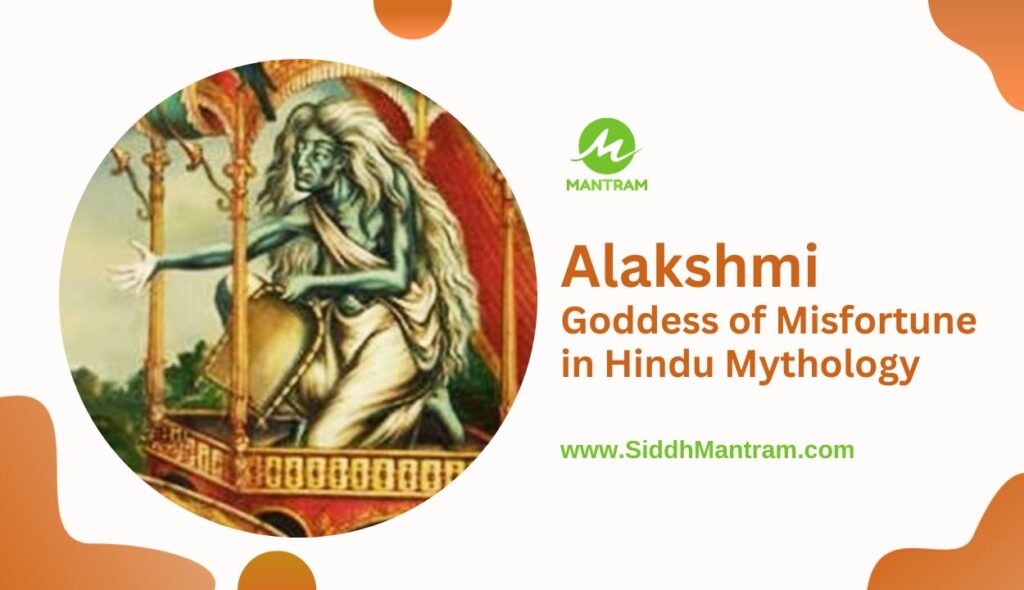In the realm of Hindu mythology, Alakshmi is a lesser-known deity, her name carrying the weight of misfortune.
The Sanskrit translation of Alakshmi literally means “not Lakshmi,” the goddess associated with wealth and prosperity.
Alakshmi is often depicted with unusual physical characteristics, such as legs resembling those of a deer, teeth like a bull, and a disposition to drive away cows.
She is considered a symbol of ill luck and is believed to bring hardships and sorrow.
In another description, Alakshmi is portrayed with a withered body, sunken cheeks, thick lips, enchanting eyes, and riding on a donkey.
References to Alakshmi can be found in the Kalki Purana and the Mahabharata, where she is described as the wife of the demon Kali, destined to be the cause of destruction in the Kali Yuga.
It is believed that Alakshmi resides among individuals harboring negative energy, leading to poverty and misery.
She symbolizes inauspiciousness and sorrow, in stark contrast to Lakshmi, who represents auspiciousness and joy.
Some sources equate Alakshmi with Jyestha, known by names such as Klahapriya and Daridra, emphasizing her association with discord and poverty.
It is said that the presence of Alakshmi in households fosters envy and hatred, leading to conflicts among siblings and the downfall of families.
The Story of Alakshmi
According to the Padma Purana, during the cosmic event of Samudra Manthan, both positive and negative forces emerged.
Alakshmi personifies the negative aspects, while Lakshmi embodies positivity. Interestingly, Alakshmi appears first, followed by Lakshmi.
Hence, she became the elder sister of the goddess Lakshmi and is referred to as ‘Jyestha Devi.’
Where does Alakshmi Reside?
In response to queries about her purpose and dwelling, Alakshmi is said to prefer residing in specific places, as outlined in the Padma Purana:
Homes where people engage in conflicts.
- Dwelling with wrongdoers.
- Residing where individuals speak cruel and false words.
- Sharing meals with wicked people during the evening.
- Staying in places where there is scattered human hair, ashes, bones, and burnt dust.
- Bringing sorrow and poverty to homes where individuals do not wash their hands and feet before eating.
- Causing distress and destitution in households where people clean their teeth with sand, salt, or charcoal.
In essence, the narrative surrounding Alakshmi serves as a cautionary tale, emphasizing the importance of virtuous living and positive actions to avoid the presence of misfortune.
In the intricate tapestry of Hindu mythology, Alakshmi stands as a reminder of the dualities inherent in the cosmic order, where prosperity and adversity coexist, each influenced by the choices and actions of individuals.



